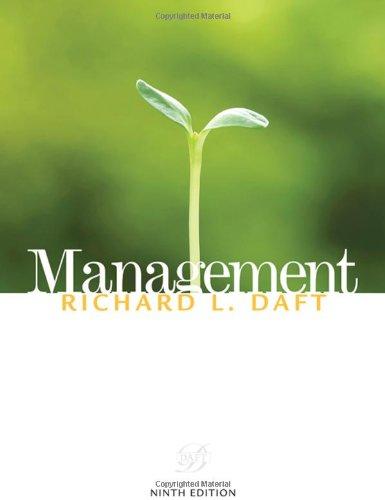In the early years of the new century, it wasnt hard to see that SIA Corporation couldnt
Question:
In the early years of the new century, it wasn’t hard to see that SIA Corporation couldn’t keep doing business the old-fashioned twentieth-century way. Chief knowledge officer Jerry Seibert fully realized he owed his new position in the newly created knowledge management department to this challenge.
Headquartered in the Midwest, SIA was an umbrella organization offering a wide range of insurance products to commercial customers of all sizes throughout the country and, increasingly, to multinational corporations throughout the world. Over the years it had diversified into various types of insurance by absorbing smaller companies until it now consisted of more than 30 separate business units. Each had its own hierarchy, characterized by strong top-down administration and the well defined rules and procedures typical of the insurance industry; virtually every employee possessed specialized knowledge about a narrowly defined market niche.
Upper-level management had given the matter considerable attention and concluded that SIA’s refined division of labor into technical specialists needed to give way to a collaborative learning organization, one where employee empowerment and open information made it possible for a single underwriter to be knowledgeable about a variety of products. Jerry’s knowledge management department, housed within human resources, could make a contribution toward this goal.
Jerry devised an elegant solution, if he did say so himself. He oversaw the development of software that allowed any SIA employee to post a query, have that question directed only to those employees with relevant expertise, and then receive an answer, often in a matter of minutes and usually before the day was out. The only hitch was that hardly anyone was posting
queries on the easy-to-use system. Why? Rachel Greenwell, a veteran SIA underwriter, clued him in. Especially after weathering a turbulent period, one that had seen plenty of layoffs in the insurance industry, many employees viewed the restructuring as the first step in a process that would lead to pink slips landing on their desks.
Some employees, in fact, saw their own highly specialized knowledge as a kind of job insurance policy. “I know that’s not what your knowledge-sharing efforts are about and that their fears are unfounded,” she reassured him. “But you’ve got about 9,999 other employees who are at least willing to entertain the possibility that sharing what they know isn’t in their best interests.”
Questions
1. What are some of the social, political, and economic forces that are influencing SIA’s decision to become a learning organization?
2. If you were a specialist at SIA, how and why would you respond to the proposed changes? What steps would you suggest Jerry take to increase employee utilization of the knowledge-sharing system in particular? How can he encourage SIA employees to share information?
3. What general obstacles would you foresee in a company such as SIA trying to make the transition from a hierarchical, or bureaucratic, to a learning organization? What are some general measures managers can take to smooth the way?
Step by Step Answer:






